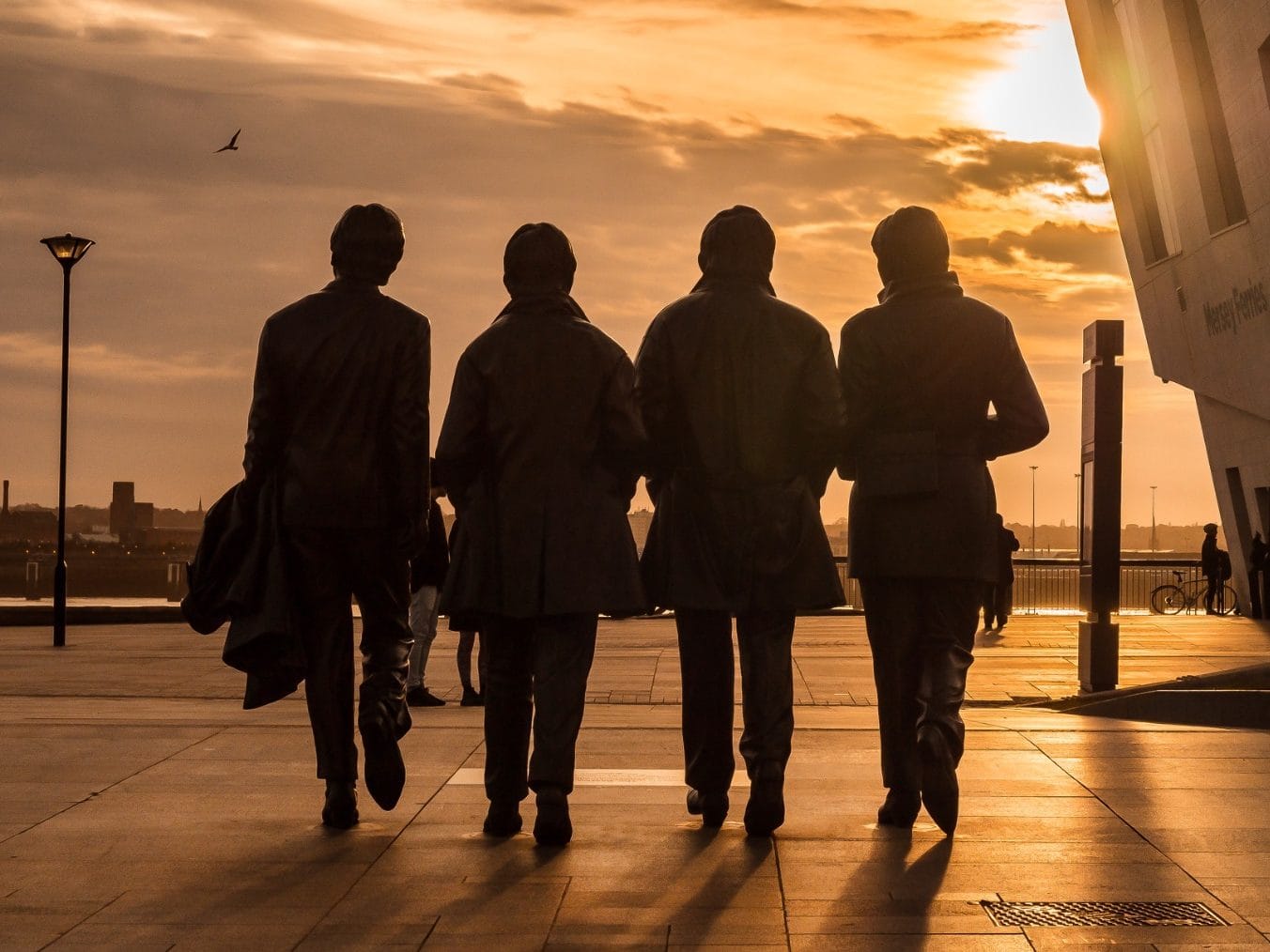
How Liverpool earned its Unesco World Heritage status – and how insensitive town planners lost it, by Mae Losasso.

The city of Liverpool was granted Unesco World Heritage status in 2004
Last week, Unesco announced its decision to strip Liverpool of its World Heritage status. Awarded the prestigious accolade as recently as 2004, Liverpool is one of only three sites worldwide to have had their status rescinded (the others were Oman’s Arabian Oryx Sanctuary and the Dresden Elbe valley in Germany). The announcement was a blow and an embarrassment – for Liverpool, and for the country – but it wasn’t a shock: Liverpool had been on Unesco’s danger list since 2012, and was issued a ‘final warning’ in 2017: if the city didn’t scale back on its dockside development schemes, the agency urged, they’d be struck off altogether.
The city, its councillors, its planners, and its investors, covered their ears – and they built and built and built. Up went bland high-rises and modernist museums, out went historical views, blotted and dwarfed by the new, insensitive architecture. And then came the proposal for Everton’s £500m stadium, right on the city’s historical waterfront. In March, the plans were approved – and Unesco looked on, as Liverpool sealed its fate.
ArrayLiverpool’s waterfront now features the ghastly museum (partly blocking the Port Authority building) and a host of other unsightly architecture
‘We do not live in the past. We are not a museum.’
Opinions streamed in on both sides of the argument. Joanne Anderson, the recently elected City Mayor (recently elected, that is, because the former Mayor was de-robed in December after being accused of bribery and intimidation with regard to building development deals), called Unesco’s decision “incomprehensible” – a strangely chosen adjective, for a decision that had been explicitly and repeatedly stately for almost a decade. “Our world heritage site,” she claimed, “has never been in better condition having benefited from hundreds of millions of pounds of investment across dozens of listed buildings and the public realm.”
In letters to national newspapers, some dismissed Unesco’s decision, claiming, as Gavin Davenport, chair of Merseyside Civic Society, did, that the “decision does not reflect what is actually happening in the city” and that “heritage is about the life and utility of a historic city’s environment and must serve its citizenry.” Meanwhile, others condemned the “desecration of our cities by developers’ and planners’ enthusiasm for high-rise blocks,” and applauded Unesco’s decision as “a timely reminder of the responsibilities of local and central government to guard and conserve both the built heritage that merits this highest of distinctions.”
A timely reminder of the responsibilities of local and central government to guard and conserve both the built heritage that merits this highest of distinctions.
It’s the problem that underpins any question of heritage: how do we conserve sites of historic importance without turning a city into a museum? Indeed, the refrain that underpinned Liverpool City Council’s decision to press ahead with development plans was couched in these very terms a decade ago: “We do not live in the past” the council’s leader intoned. “We are not a museum.” But, by the same token, how do we allow a city to stay alive, to keep changing and evolving, while still ensuring that valuable buildings are preserved? To answer these questions, you have to understand the fabric of a city – so what is the story of Liverpool? How did it earn its Unesco status in the first place? And why, exactly, did it lose it?
‘The Gateway of Empire’
The story of modern Liverpool begins in the early eighteenth century, when its first docks began to open. This was the dawn of the British Empire, the country’s elites getting fat on global trade, sketching out a triangle of tea, sugar, cotton, tobacco and bodies, across the world’s oceans. Before long, the city was dubbed ‘The Gateway of Empire’, and its architecture followed suit, in the form of a neo-classical town hall, built in 1754 and completed with Corinthian pillars and carved reliefs, which illustrated the spoils of empire – including human trafficking. It’s this, of course, that lurks behind every brick and stone in Liverpool’s architectural history. As one Reverend William Bagshaw Stevens commented in 1797, “throughout this large-built Town every Brick is cemented to its fellow Brick by the blood and sweat of Negroes.”

A 19th century engraving of the Port of Liverpool in Lancashire, 1885.
Yet, even after the abolition of slavery in 1807, Liverpool continued to soar, and its architecture grew in proportion with its economy. More docks were added to the waterfront, including the Albert Dock in 1847, which was praised by architectural historian Nikolaus Pevsner: “For sheer punch,” he wrote, in his Buildings of England series, “there is little in the early commercial architecture of Europe to emulate it.” In 1854, St George’s Hall was completed, an even more impressive work of neo-Classical bombast than the earlier town hall, which looked to emulate the splendour of the Roman baths of Caracalla. Liverpool kept prospering, and buildings kept rising to the rhythm of its affluence. By the end of the First World War, the Port Building of Liverpool (1907), The Royal Liver Building (1911) and The Cunard Building (1916) – otherwise known at The Three Graces – had all been completed. Empire may have been on the brink of collapse, but Liverpool remained glorious in its ignorance.
‘Liverpool was Britain’s Detroit’
By the 1930s, murmurs of the British Empire’s decline were in the air – but so, too, were whispers of war. The Second World War stalled the devastating impact that imperial collapse would eventually have on Liverpool – and in the postwar years, the city even enjoyed a momentary boom. Babies were born, unemployment was low, wages were high, and the wheels of culture were turning. Always alive to its multicultural character, the city saw itself as ‘The New York of Europe’, and the shipmen working the Liverpool-New York line brought the sounds of American culture to the shores of the Mersey.
The 1950s and 60s saw the emergence, not only of musicians in Liverpool, but of comedians, footballers, artists, designers, and theatre actors. The city was famous for its Merseybeat sound years before the explosion of the Beatles – a reminder that culture has long been a saving grace for the Northern city. But culture, alone, couldn’t keep Liverpool alive and, by the 1970s, a constellation of circumstances conspired to doom the former jewel in the crown of the British Empire.
The city was famous for its Merseybeat sound years before the explosion of the Beatles – a reminder that culture has long been a saving grace for the Northern city.
Perhaps the biggest blow to Liverpool came in 1973, when Britain joined the European Economic Community (EEC), which emphasised European markets over transatlantic trade. The final nail in the coffin came in the form of the EEC’s switch from imports of American sugar cane – the resource on which Liverpool’s economy had been founded – to the growing of sugar beet on home soil. In 1981, Tate and Lyle’s Love Lane Refinery closed its doors after 112 years, bemoaning its fate as a victim of the UK’s EEC membership. As novelist Linda Grant put it: “Liverpool was Britain’s Detroit, a city that had died through its own irrelevance to the modern economy.”
And so, Liverpool fell off the national map just as spectacularly as it had stepped onto it, almost three hundred years before. The elites cut out fast, severing their ties with the ailing city like rats off a sinking ship. Race riots in Toxteth, fuelled by recession, unemployment and child poverty, left the city on fire. Its decline was ignominious, a product of its success. Like the sugar on which Liverpool’s merchants had grown fat, the heady rush was followed by a swift and heavy crash.

Liverpool Cathedral, designed by Sir George Gilbert-Scott at the turn of the 20th century, a time when town planners cared about the city

The cathedral’s interior
‘The World in One City’
But this is not, as anyone who lived through the European referendum of 2016 might assume, a parable of Euro-scepticism. Because, in fact, the very community that brought Liverpool to its knees also raised it, a decade later, like Lazarus from his icy tomb. In 1993, Europe’s Structural Funds Programme funnelled millions of pounds into Liverpool’s struggling economy, granting it Objective One Status, in a bid to resuscitate the dying city.
The Albert Docks were regenerated, coffee shops and boutiques sprung up throughout the city’s historical quarters, and instead of Tate and Lyle sugar, the Tate gallery opened its northern wing in one of the disused dockland warehouses. In a matter of years, the city was transformed from a failed wasteland into a dynamic arts hub. In 2004, Unesco granted Liverpool World Heritage status and, in 2008, the city won the title of European Capital of Culture, channeling its melting-pot roots with the slogan: ‘The World in One City’. The city had achieved what every city clamours to accomplish: it had arrived in the future with its history intact. In other words, it had found the delicate balance between conservation and evolution – so what went wrong?
…as the city blossomed, the eyes of property developers lit up with pound signs…
Once again, Liverpool’s problem was its own success. Because, as the city blossomed, the eyes of property developers lit up with pound signs: opportunities for investment, it seemed, were hiding around every corner of the now desirable metropolis. Sure enough, shiny new development deals were quickly struck with overseas investors with little regard to the city’s existing buildings or urban plan. In recognition of a shared merchant trading history, Liverpool became twinned with Shanghai, and Chinese stakeholders were prevailed upon to pour money into the Peel Group Plan; the very development scheme that Unesco blames for the “irreversible loss” of the city’s “authenticity and integrity.” Along with the Everton stadium, the plan promised to “regenerate and transform former industrial sites on dockland, canal and river banks into attractive and sustainable waterfront living locations” with “commercial, retail, educational and leisure opportunities.” Oh, and the arrival of the 50-foot tall Shanghai Tower.
Make. More. Money.
These are international designs, which translates – in contemporary architectural terms – into huge, bland, expensive, faceless, and meaningless buildings, plonked down without any consideration for their surroundings and with only one ambition in mind: Make. More. Money. What’s more, these buildings are unlikely to “serve [the city’s] citizenry” as Gavin Davenport suggests they will. The glossy new Everton stadium will surely hike its ticket prices through the roof, while the high-rise housing will be split between luxury homes and residencies for students, who will probably be gone in the space of a few years. Such developments are hardly pillars of community.

A view of the town hall
Liverpool is an exaggerated case – but, sadly, not an isolated one. A number of the UK’s Unesco World Heritage sites face delisting, including Stonehenge (thanks to Grant Shapps’ outrageous scheme to build an ill-advised tunnel underneath the site), Edinburgh’s new and old towns and the Tower of London, all of which are under scrutiny by Unesco thanks to controversial development schemes (aka “Fuck history. Make. More. Money.”).
Indeed, one would be hard-pressed to find anywhere in the UK that isn’t developing at a comparable rate. Go to Manchester, to Birmingham, to Norwich, to Cambridge – and, of course, to London, where a tycoon has just been given the go-ahead to build a palace on the fringes of Hyde Park – and you’ll see a total contempt for sensitive urban planning, for anything like the care of culture and history that these places deserve.
Now the battle begins
So how do we tread the line between urban evolution and historical conservation? Ironically, Liverpool got it right a few years ago, by scaling back on new construction, by regenerating existing spaces, by investing in the arts, and by refusing to place the reins of the city into the hands of a few private investors – the very opposite, in short, of everything it’s done in the years leading up to the Unesco decision. Don’t let the super rich erase heritage in the interests of their pockets. Unesco were right to rescind Liverpool’s World Heritage status – but now the battle begins to save the rest.
- Want to write for us? We’re looking for the best British arts and the people that make it, from Land’s End to John O’Groats. Have a look at our pitching guidelines.


